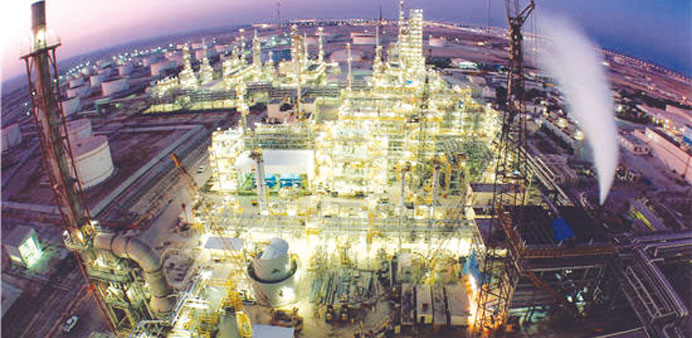By Santhosh V Perumal/Business Reporter
Qatar Petroleum (QP) could save about $1.75mn yearly with its Mesaieed refinery gearing up to adopt zero liquid discharge (ZLD) as part of doubling the capacity of waste water treatment. The plan also includes a new train of biological treatment plant.
The ZLD system will recover 99% of the reusable water, which will be used as make-up water for the cooling towers, demineralisation unit of boiler feed and for irrigation, Nadeem Shakir, senior project engineer, QP Refinery, said in a technical paper presented to the 2nd Joint Qatar-Japan Environment/ 21st Joint GCC-Japan Environment symposium, which concluded yesterday.
“The yearly savings to QP Refinery, from recycling, is expected to be about $1.75mn in terms of water costs,” he said.
The implementation of the project will start soon and a pilot plant will be installed in the refinery before the full scale implementation of the scheme, he added.
Based on the extensive studies conducted over a two-year period, the best available technology has been evaluated for ZLD, which involves multi-stage reverse osmosis for brackish water recovery and mechanical vapour recompression with crystalliser for brine and flue gas scrubber recovery and salt removal.
The QP Refinery in Mesaieed is the oldest in Qatar with a production capacity of 137,000 bpd. The major hydrocarbon products include Jet A-1 fuel, gasoline and LGO (light gas oils).
The ZLD scheme comes as part of doubling the capacity of the existing WWTP (waste water treatment plant) to 312 cu m per day from 156 cu m per hour by adding a new train. It will also help in maintenance by sparing one train, according to him.
Terming that ZLD is a highly capital intensive investment with equally high operating costs, Shakir said the economic analysis indicates that there is an anticipated saving of around $3mn per year in terms of replacing Kharamaa water costs for process water.
Nonetheless net present value of the investment and financial cost benefit analysis “does not support investment recovery within the economic life of the ZLD plant”, Shakir said.
Yet QP is committed to implementing the ZLD project in requirement of the Ministry of Environment (MoE) legislation and for the sake of sustainable environment, he said, adding “a time frame of 3-5 years is envisaged for implementation of the upgradation/ new WWTP train and the ZLD plant in QP refinery.”
The new regulation from MoE prohibits disposal of the treated industrial effluent to the sea, providing an opportunity for the refinery to study ZLD. The primary and the secondary effluent treatment are also being upgraded to integrate with an efficient ZLD scheme.
ZLD is the treatment of aqueous effluent streams, containing dissolved solids, to separate contaminants as material viable for disposal to approved waste disposal sites and to render the remaining water reusable in the facility process.
“The existing waste water treatment plant is challenged by capacity constraints, feed water quality and lack of on line analysers for real time quality monitoring,” Shakir said, adding the EDR (electro-dialysis reversal) unit installed a decade back for recycling part of the treated water for cooling water makeup, has not been effective due to frequent membrane clogging.
Highlighting that several alternatives available technologies were studied in detail to select the appropriate technology for the new WWTP, he said these narrowed down to conventional treatment plant, sequential batch reactor and micro-filtration batch reactor.
“It has been concluded that the conventional WWTP with the additional components best meets the refinery requirement in terms of capital expenditure, water quality, ease in operation and maintenance,” the paper said.

